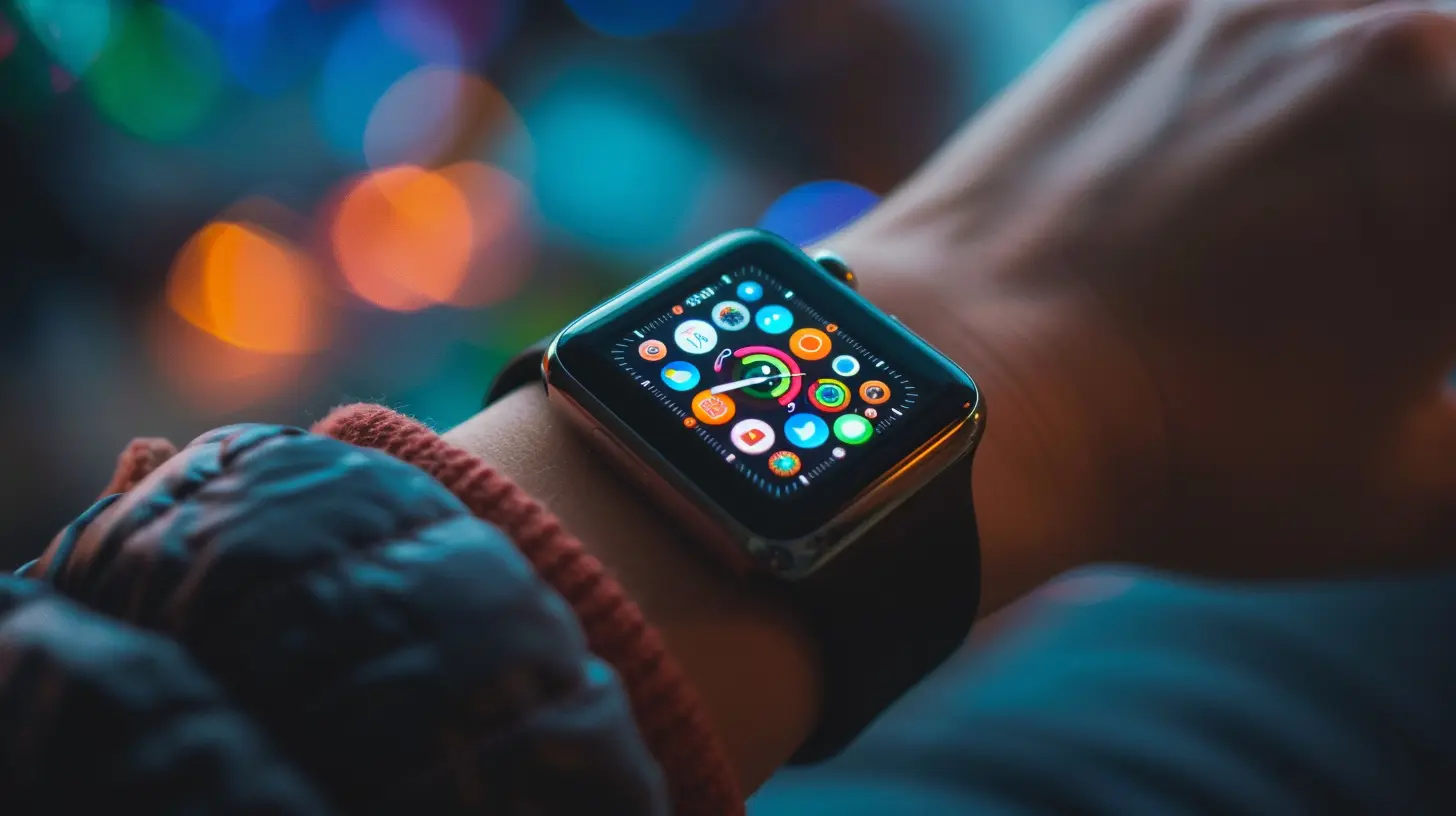Wearable Tech in the Workplace: A Look at the Benefits and Risks
28 September 2025
In recent years, wearable tech has gone from being a cool gadget on your wrist to an essential tool in the workplace. You’ve probably seen someone sporting a smartwatch, fitness tracker, or even smart glasses. But have you ever stopped to think about how these devices are being used beyond personal health and fitness? Well, the truth is, wearable technology is increasingly finding its place in the professional world, and it’s shaking things up!
In this article, we’ll take a deep dive into how wearable tech is transforming the workplace. We'll explore not just the benefits, but also the risks that come along with it. So, let’s get into it, shall we?

What is Wearable Tech, and Why is it a Big Deal?
Before we dive into the nitty-gritty of wearables in the workplace, let’s quickly cover what wearable technology actually is. Wearable tech refers to any electronic device that can be worn on the body. Think of smartwatches, fitness trackers, smart glasses, and even smart clothing. These devices are designed to collect data, communicate with other devices, and, in some cases, make decisions on behalf of the wearer.Now, you may be wondering: Why is this a big deal? Well, wearable tech has enormous potential in the workplace. It can improve productivity, enhance safety, and even boost employee well-being. But like any technology, it comes with its own set of risks, which we’ll cover later.
Let’s first dive into the benefits!

The Benefits of Wearable Tech in the Workplace
1. Increased Productivity and Efficiency
Ever tried juggling multiple tasks at work, only to wish you had an extra set of hands or eyes? Wearable tech might not give you superpowers (yet), but it can definitely make multitasking easier. Devices like smartwatches allow employees to receive notifications, set reminders, and even communicate without constantly checking a phone or computer. This means less time wasted and more focus on the tasks at hand.For example, warehouse workers using smart glasses can receive real-time inventory updates or location instructions, making it easier to find items without stopping to look at a computer. It’s like having a personal assistant right on your face!
2. Enhanced Employee Health and Wellness
Healthier employees are happier and, let’s be real, more productive. Many companies are embracing wearable tech like fitness trackers to encourage wellness programs. These devices can track steps, monitor heart rates, and even remind employees to stand up and move around. Some companies even offer incentives for employees who meet certain activity goals.But it doesn’t stop there. Wearables can also monitor stress levels, sleep patterns, and even hydration. Imagine a device that could remind you to drink water when you’ve been sitting at your desk for hours. It’s like having a digital mom, but way less naggy.
3. Improved Workplace Safety
In industries like construction, manufacturing, and healthcare, safety is a top priority. Wearable tech can play a huge role in keeping employees safe. For instance, smart helmets and vests can monitor environmental conditions like temperature and air quality, alerting workers if conditions become unsafe. Some devices even have fall detection features, which can immediately notify supervisors in case of an accident.In healthcare, smart wearables can monitor vitals in real time, allowing for quicker responses to medical emergencies. Nurses wearing smartwatches can be alerted to patient needs instantly, without having to constantly check their devices. The result? Fewer accidents, faster responses, and a safer workplace overall.
4. Better Time Management
Let’s face it—time is money in the workplace. Wearable devices can help employees better manage their time by tracking how long they spend on different tasks. Some companies use wearable tech to monitor employee location and movement in real-time, which can help identify inefficiencies in workflows.For example, in a busy restaurant, wearable devices can track how much time is spent on different tasks, helping managers optimize staff scheduling. Who knew a watch could help you run a smoother operation?
5. Data-Driven Decision Making
Data is king, and wearable tech can provide a treasure trove of it. Employers can gather insights into employee behaviors, productivity, and health trends. This data can then be used to make better, more informed decisions.For example, if wearables show that employees are more productive in the morning, companies might shift meetings to the afternoon to capitalize on that productivity spike. Or, if data shows that a large number of workers are experiencing high stress levels, employers can implement stress-reduction programs.

The Risks of Wearable Tech in the Workplace
Alright, all of that sounds pretty fantastic, right? But let’s pump the brakes for a second. It’s not all sunshine and rainbows when it comes to wearable tech in the workplace. With great power, as they say, comes great responsibility—and a few risks.1. Privacy Concerns
If you’re wearing a device that tracks your every move, you might start feeling a little bit like Big Brother is watching. And you wouldn’t be wrong to feel that way. One of the biggest concerns with wearable tech in the workplace is data privacy. Employees may worry about how much of their personal data is being collected and how it’s being used.For instance, if a fitness tracker shows that an employee isn’t meeting their activity goals, could that data be used against them in performance reviews? Or, if wearables track location data, could that information be used to monitor employees in ways that feel invasive? These are valid concerns, and companies need to be transparent about what data they're collecting and why.
2. Cybersecurity Risks
Anything connected to the internet is vulnerable to hacking, and wearable devices are no exception. If hackers gain access to wearable devices, they could potentially access sensitive company information or even personal employee data. Imagine a hacker gaining access to a smart glass system used in a secure facility. It’s not just inconvenient—it could be a serious security breach.To mitigate this, companies need to invest in robust cybersecurity measures, like encryption and two-factor authentication, to keep wearable devices secure.
3. Potential for Over-Surveillance
Wearable tech can provide employers with a lot of useful data, but is there such a thing as too much information? Some employees may feel like they’re being micromanaged if their every move is tracked. There’s a fine line between using data to improve workflows and using it to monitor employees to an uncomfortable degree.For example, using wearable tech to track how long employees spend in different areas of a warehouse can improve efficiency. But if that same data is used to penalize employees for taking too many bathroom breaks, it starts to feel a bit like surveillance overkill.
4. Physical and Mental Health Risks
While wearable tech can certainly promote health, there are also concerns about its potential negative impact on both physical and mental health. In some cases, wearing a device all day can lead to physical discomfort, like wrist pain from smartwatches or eye strain from smart glasses.On the mental health side, constantly being connected to a device can increase stress levels. Employees may feel like they’re always “on,” unable to disconnect from work. This can lead to burnout, which is definitely not the goal of using wearable tech.
5. Cost and Implementation Challenges
Last but not least, there’s the issue of cost. Implementing wearable tech in the workplace isn’t cheap. Companies need to invest in the devices themselves, as well as the infrastructure to support them (like software and training). Additionally, not all employees may be comfortable using wearable tech, which could lead to resistance or a slow adoption process.For businesses operating on tight budgets, the cost of implementing wearable tech might outweigh the benefits. It’s crucial for companies to weigh the costs and benefits before diving headfirst into the wearable tech pool.

Best Practices for Implementing Wearable Tech in the Workplace
Now that we’ve covered both the benefits and risks, how can companies implement wearable tech in a way that maximizes the good while minimizing the bad? Here are a few best practices to keep in mind:1. Be Transparent: Clearly communicate to employees what data is being collected, how it’s being used, and why. Transparency goes a long way in building trust.
2. Prioritize Privacy and Security: Implement strong cybersecurity measures to protect both company and employee data. Ensure that employees have control over their personal information.
3. Offer Opt-In Programs: Instead of mandating wearable tech, consider offering it as an opt-in program. This gives employees the freedom to choose whether or not they want to participate.
4. Provide Training: Make sure employees are fully trained on how to use wearable devices. This will help ensure that they’re comfortable with the technology and know how to use it to its full potential.
5. Monitor Impact: Regularly assess the impact of wearable tech on employee productivity, well-being, and satisfaction. Make adjustments as needed to ensure that the technology is having a positive impact.
Conclusion
Wearable tech in the workplace is more than just a trend—it’s a game-changer. From boosting productivity to improving workplace safety, the benefits are clear. However, it’s important to address the risks, particularly when it comes to privacy, security, and over-surveillance.By implementing wearable tech thoughtfully and transparently, companies can unlock its full potential while keeping employees' best interests in mind. It’s a balancing act, but when done right, wearable tech can be a win-win for both employers and employees.
all images in this post were generated using AI tools
Category:
Wearable TechAuthor:

Vincent Hubbard
Discussion
rate this article
1 comments
Greta Warner
Wearable tech in the workplace offers numerous benefits, such as improved productivity and health monitoring. However, companies must address potential risks, including data privacy concerns and employee discomfort. A balanced approach, focusing on transparency and user autonomy, can maximize advantages while mitigating drawbacks. Thoughtful implementation is key to success.
October 9, 2025 at 3:02 AM

Vincent Hubbard
Thank you for your insights! Balancing benefits with privacy and comfort is indeed crucial for successful implementation of wearable tech in the workplace.


